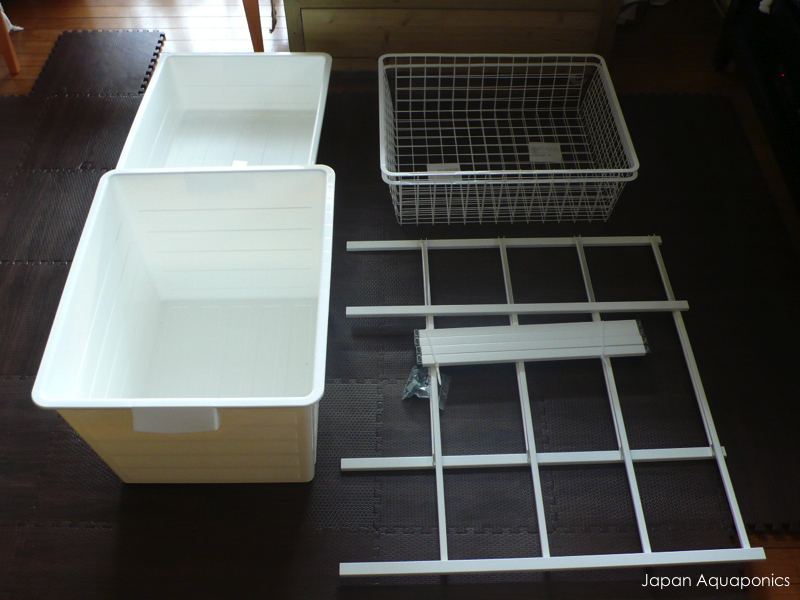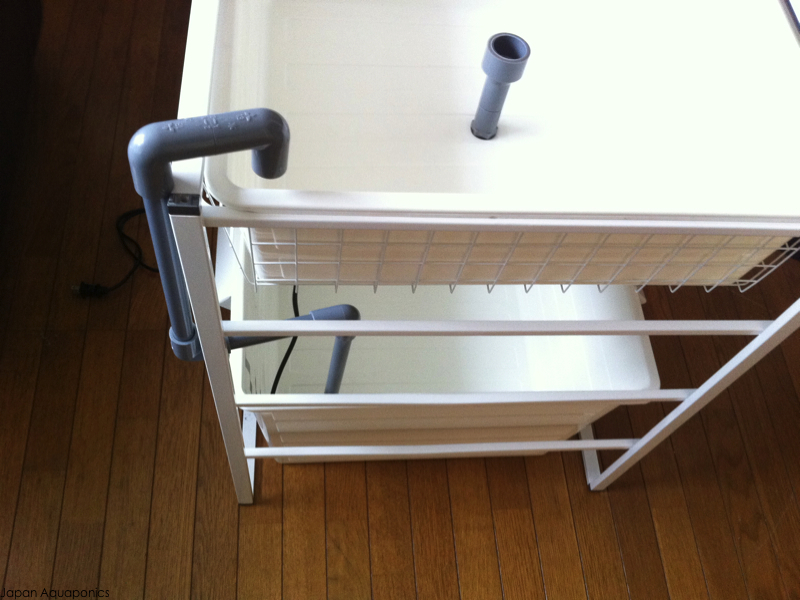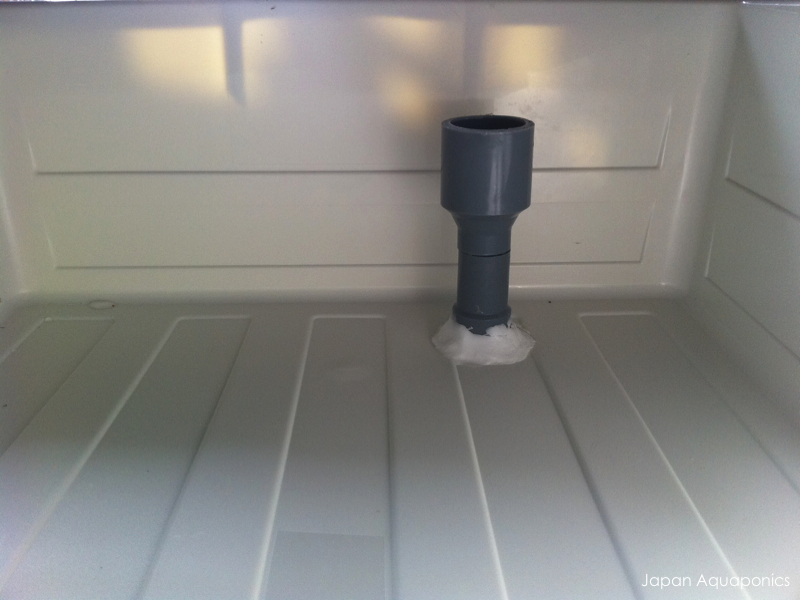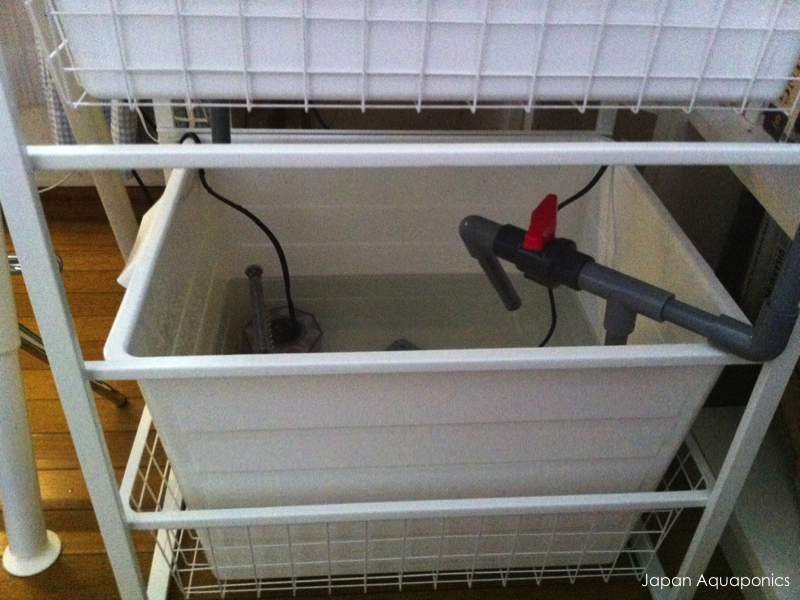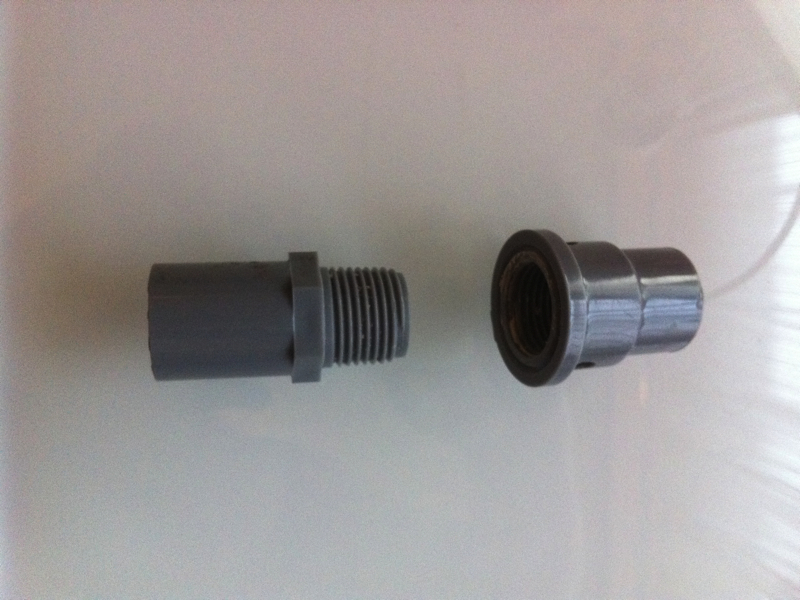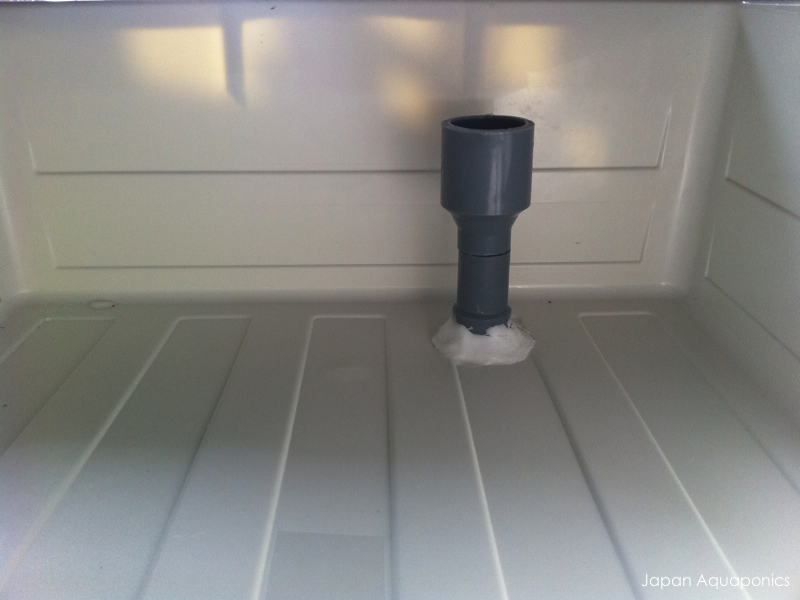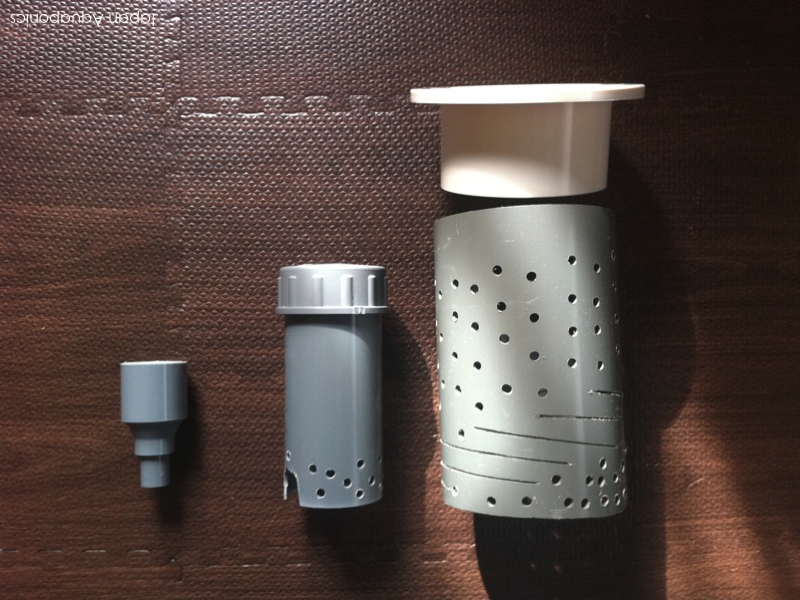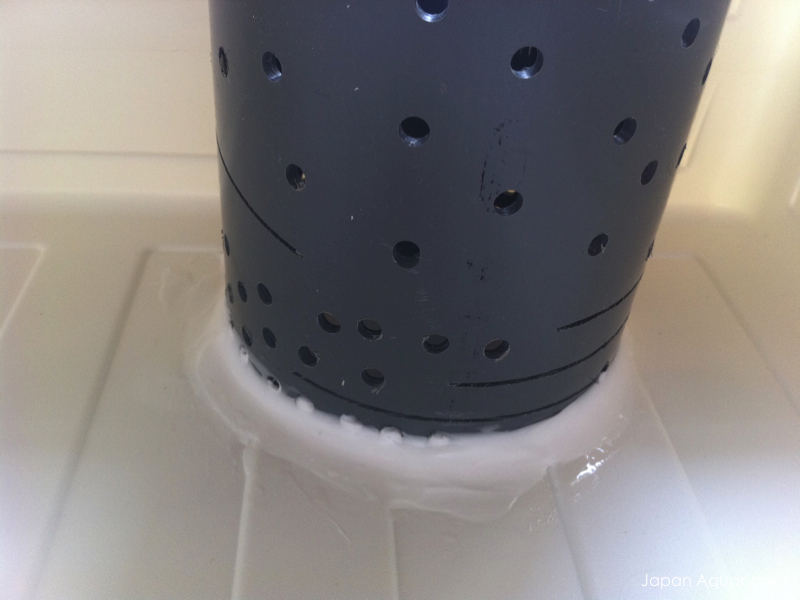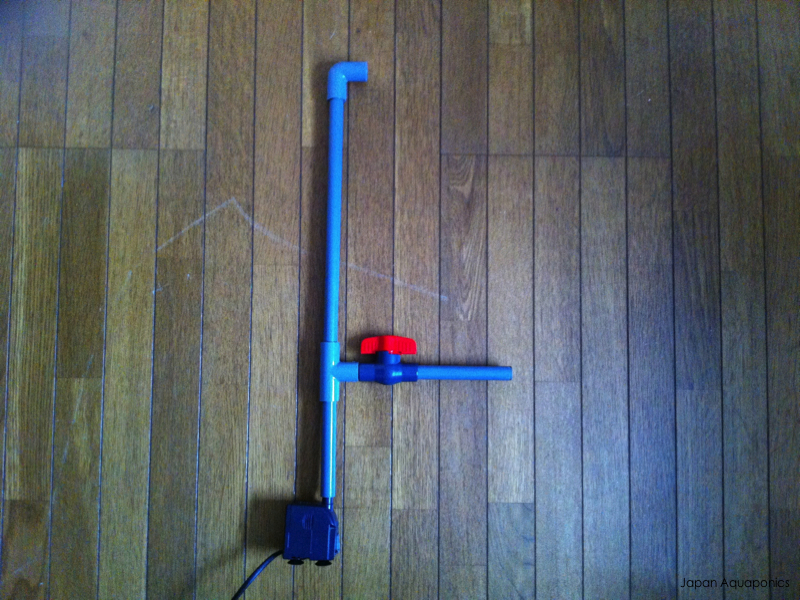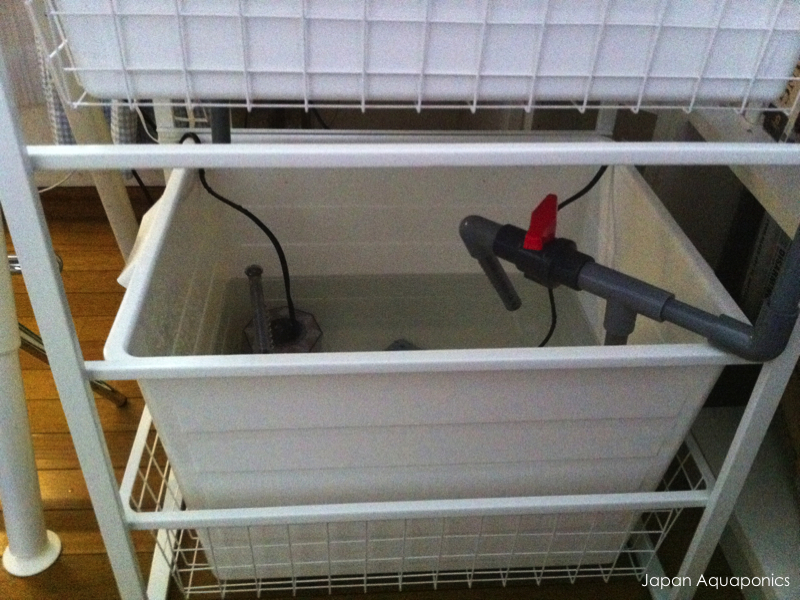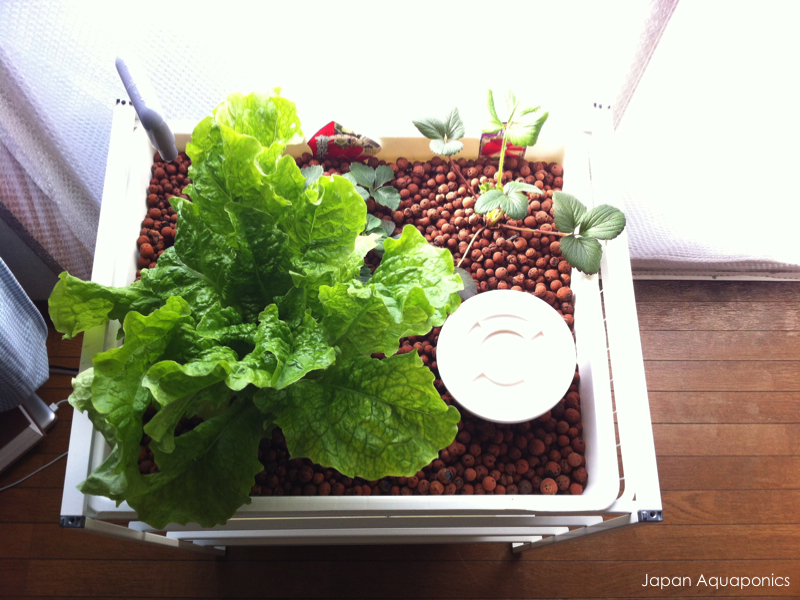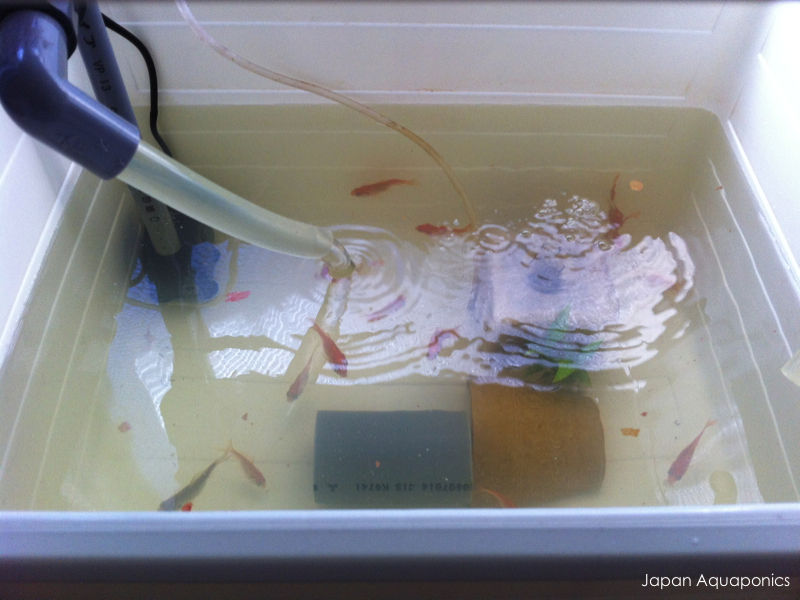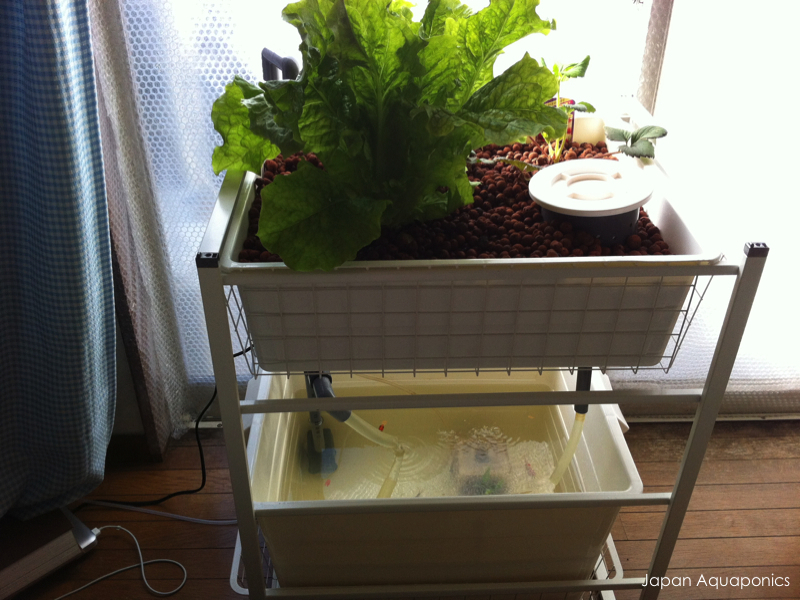You should have all the framework, the containers, and the plumbing set up now. Now add water into the fish tank and start the pump up. We want to test to see if everything works properly, and if the system is watertight!
The next thing to do is to fill the top container (the growbed) with some sort of growing media. This could be hydroton, lava rock, perlite, river stones or something similar. Select media that allows the water to flow through the growbed.
Once this has been done, then you are ready to add your fish and to start putting plants into your system! Initially you should add only a couple of small fish just to start producing the ammonia needed to kickstart your system. Goldfish work really well.
Further information: Setting up your system is just the beginning and so we recommend checking out more information on how to actually run your system and how aquaponics works. We are based in Japan, but there is a huge amount of helpful information in English about aquaponics on our website: japan-aquaponics.com.




